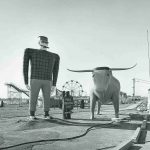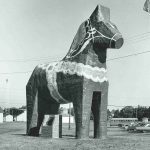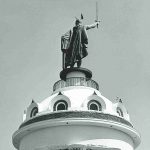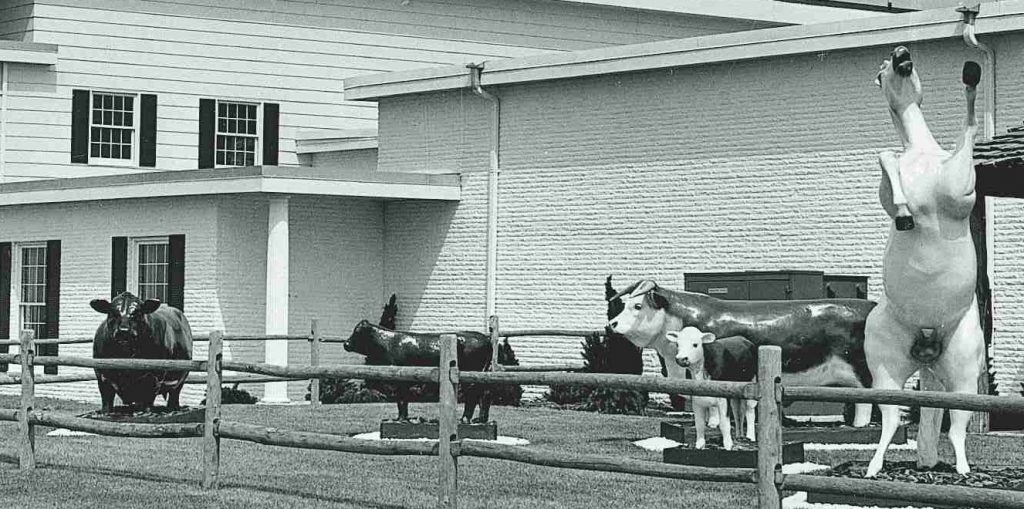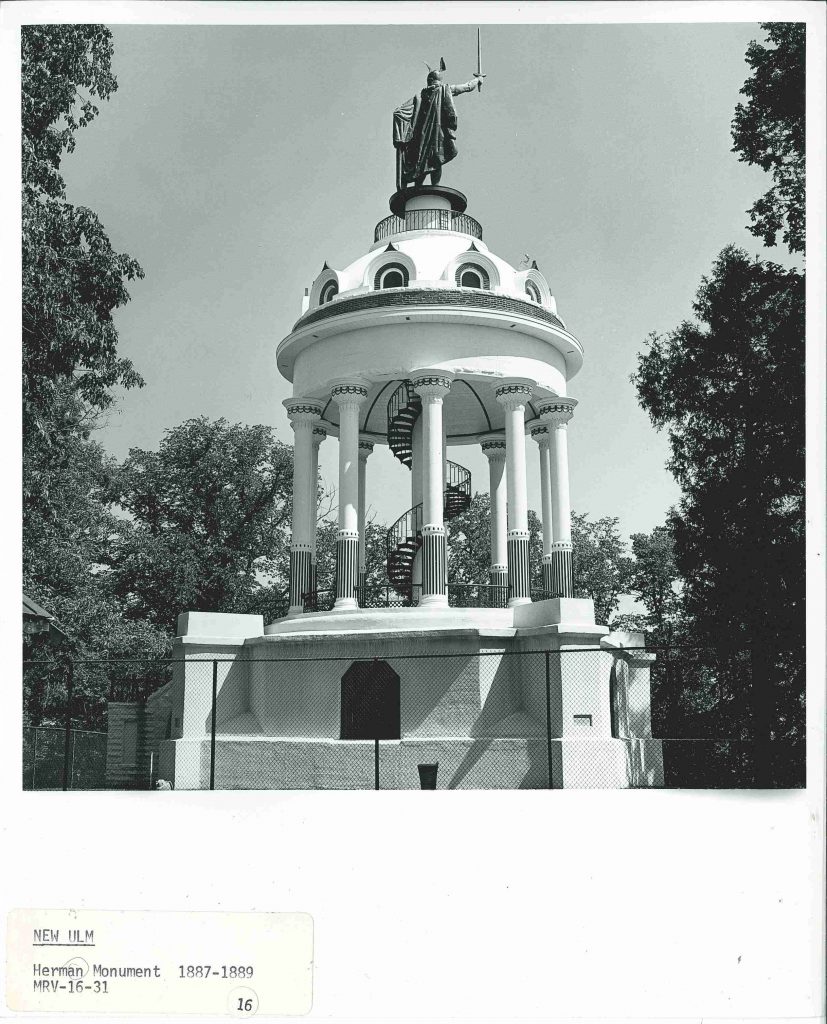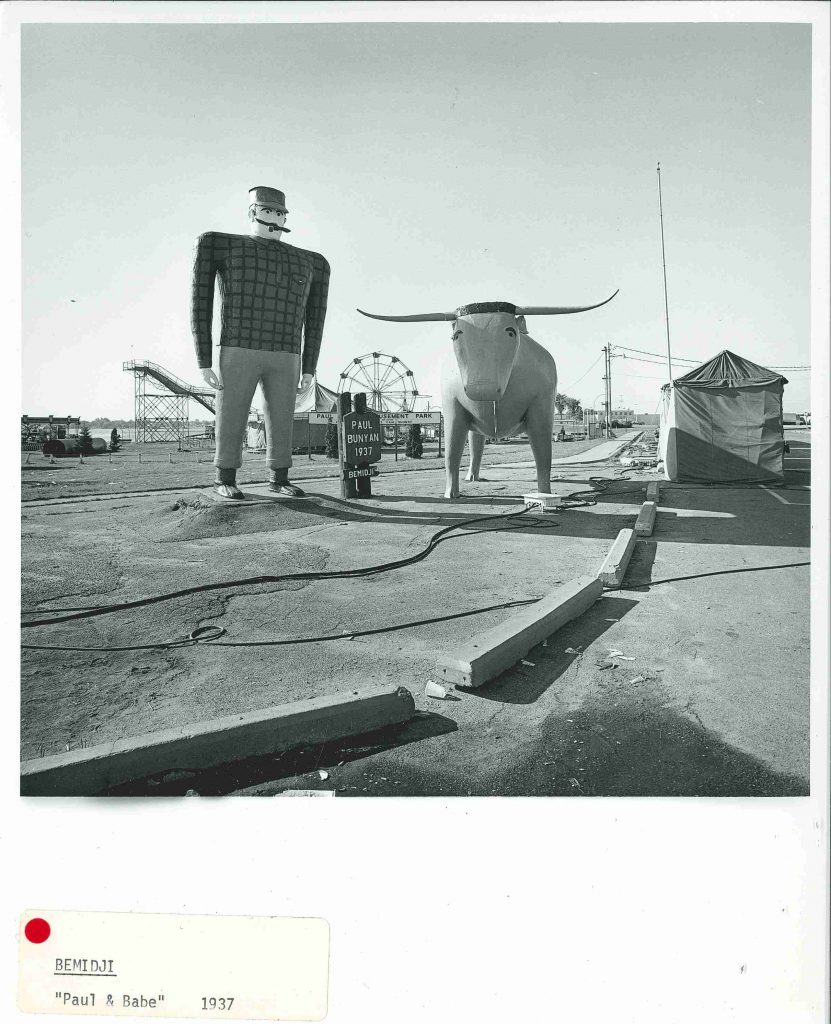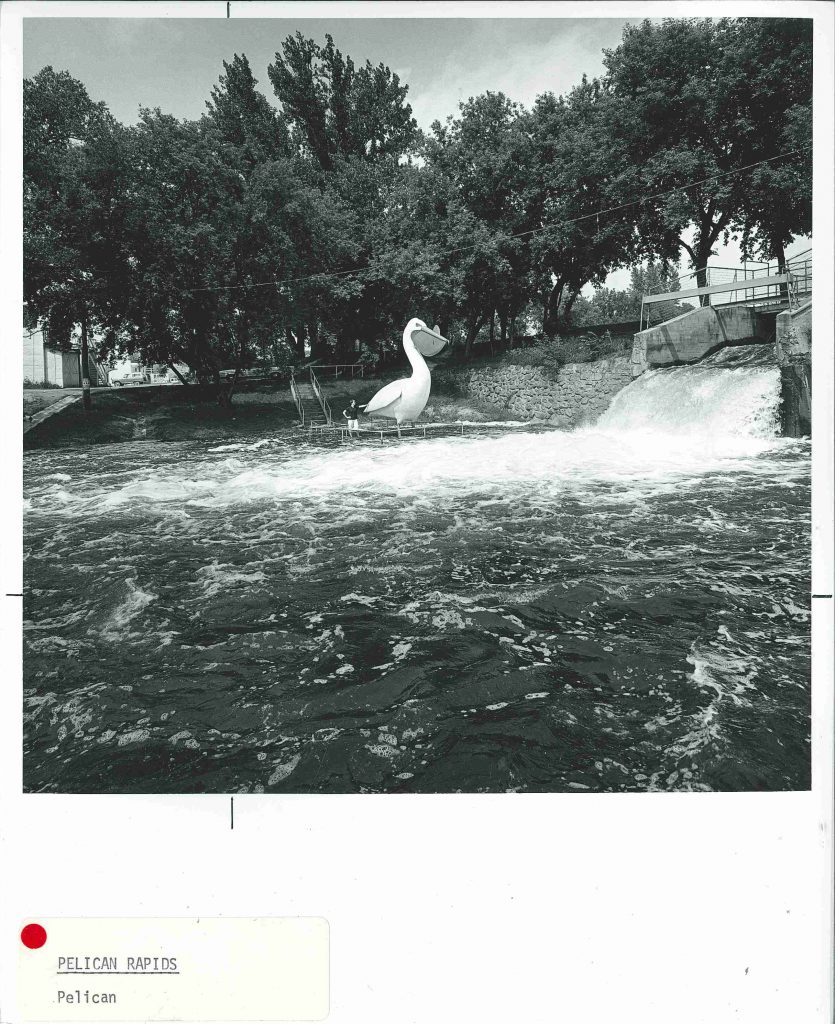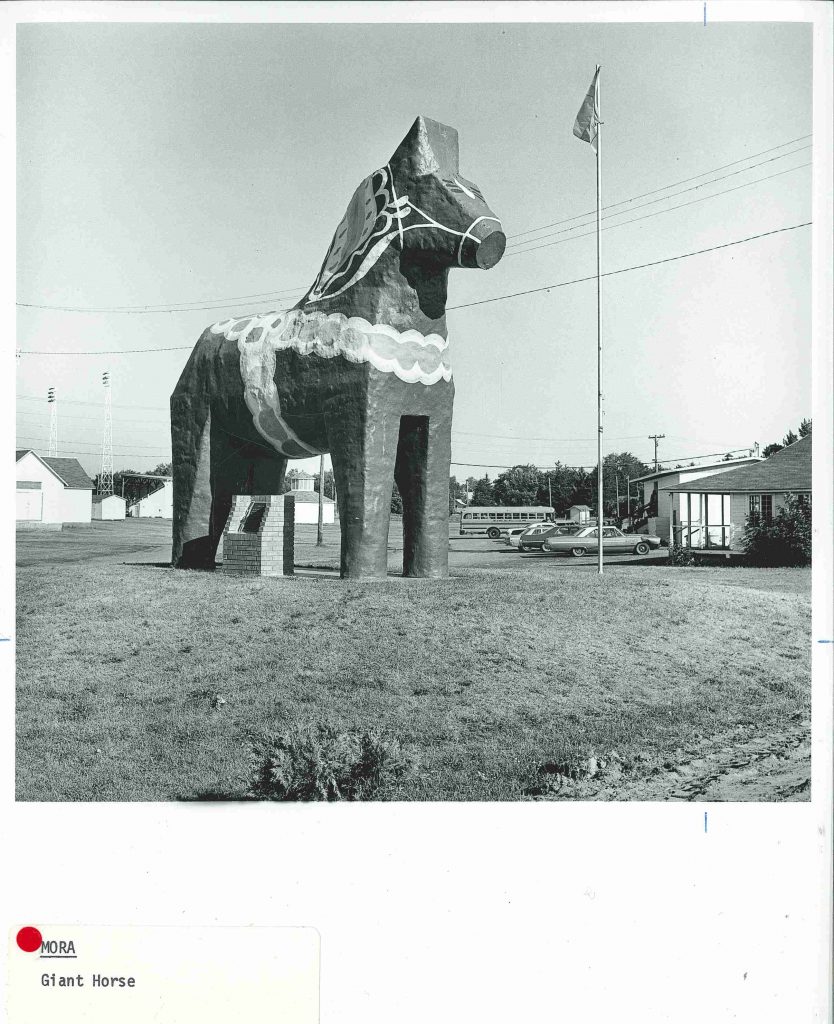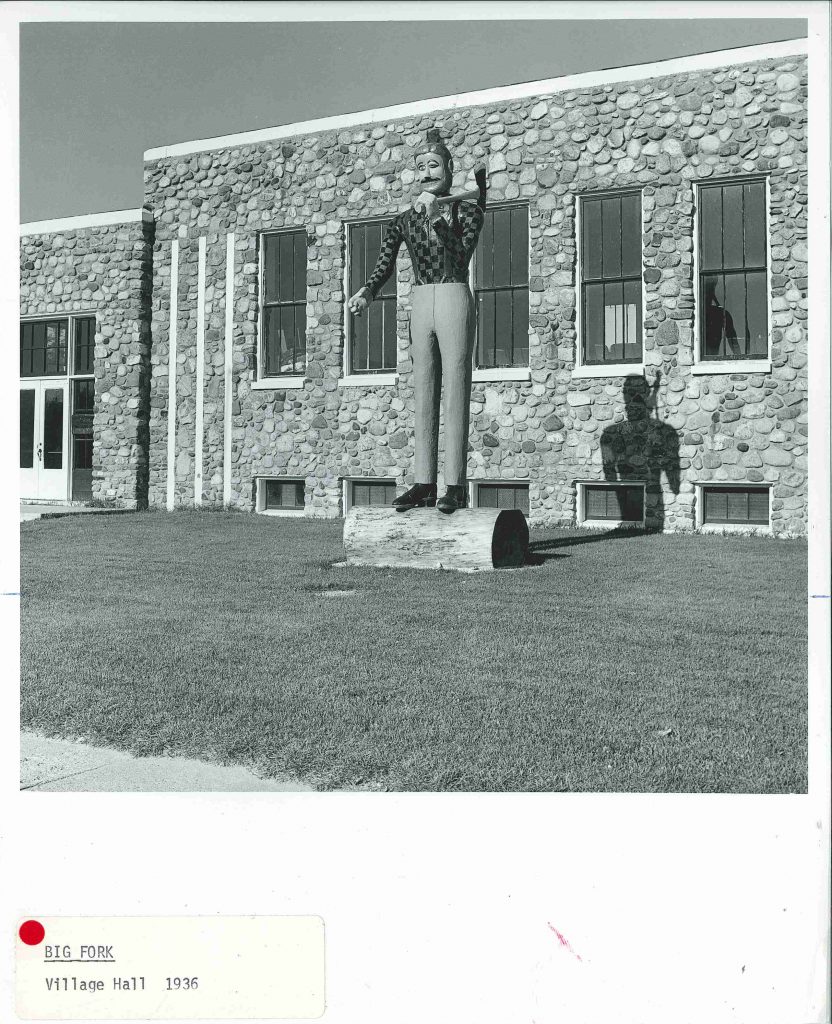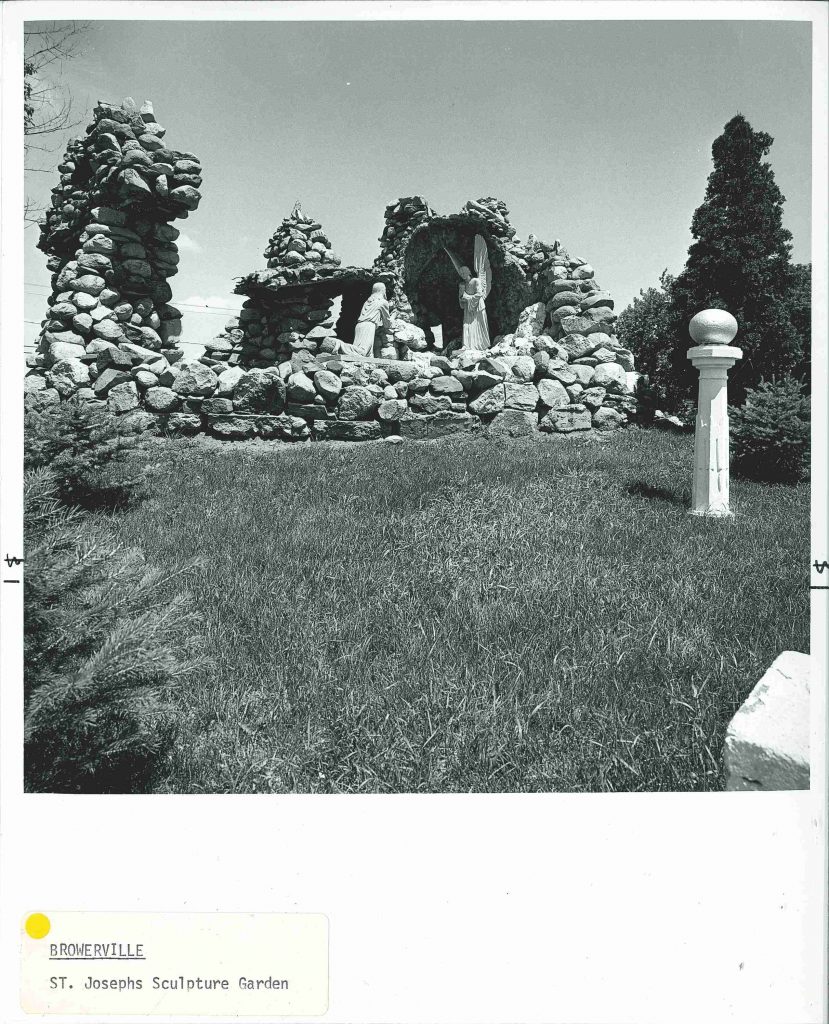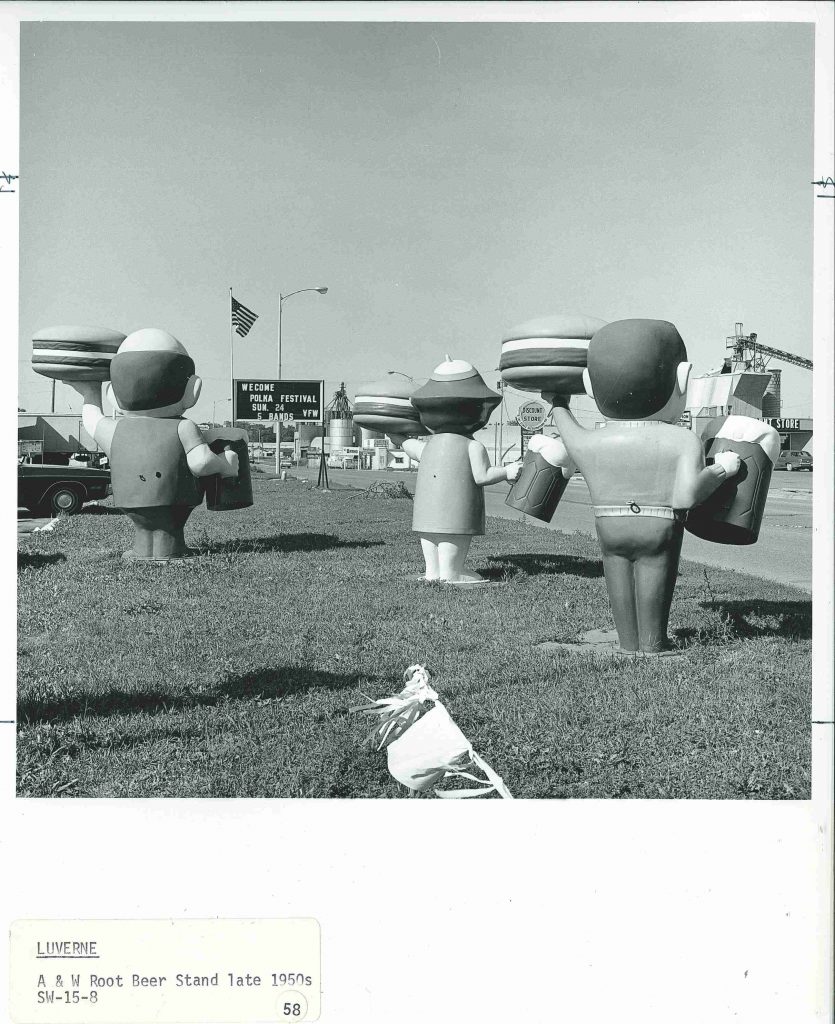Minnesota has no shortage of roadside attractions, including sculptures of monumental scale. Third in a series of photo-posts inspired by A Guide to the Architecture of Minnesota, published in 1977 as a supplement to University Gallery’s Bicentennial exhibition The Art and Architecture of Minnesota, this post is dedicated to just a few of the architectural sculptures across the state.
A detail (below) from the previous post–just one of the quirky sculpture areas of the Nordaas American Homes former landscape/architecture folly in Minnesota Lake.
Hermann Heights Monument aka Hermann the German (below) of New Ulm, MN.
Paul Bunyan and Babe the Blue Ox, statues standing 18′ and 10′ tall respectively, made their public debut at the 1937 winter carnival in Bemidji, MN. Paul and Babe have continued to captivate imaginations ever since.
Inspired by the enduring success of Paul & Babe in Bemidji, Pelican Pete (below) “is a 5:1 scale model [in concrete] of a mounted stuffed pelican which is located in the Old City Hall” of Pelican Rapids.
The giant Dalecarlian Horse or Dala Horse in Mora, MN honors the towns Swedish roots.
While this winking lumberjack no longer stands outside Bigfork’s WPA-built Village Hall, a new lumberjack does.
St Joseph’s Church sculpture garden in Browerville MN (below). “To the right and left of the church are what appear to be an eighteenth century English folly and grotto, only in this case the intent is religious– a depiction of Christ in the garden of Gethsemane. The boulder composition on the right with its sculptured figure, and the cascade on the left were created in the early twentieth century by Joseph Kieselewski.” ~A Guide to the Architecture of Minnesota, 1977.
The A&W Root Beer stand in Luverne, MN. This image didn’t make it into the final publication but a description did:
“Three creatures from the wilds of Disneyland, each holding a hamburger and a mug of root beer.”
Creatures from the wilds of Disneyland?? I can only imagine–but will probably never know–the sculpted expressions from the other side.
—Heather Carroll is the processing archivist for the Weisman Art Museum‘s collection at the University of Minnesota Archives. This project was made possible by funds provided by the State of Minnesota from the Arts and Cultural Heritage Fund through the Minnesota Historical Society.
